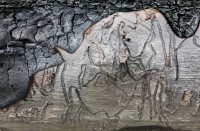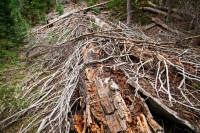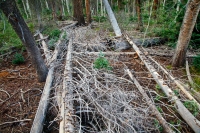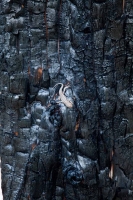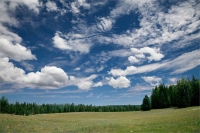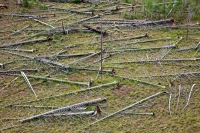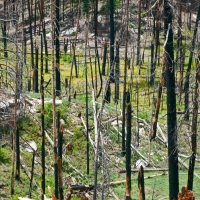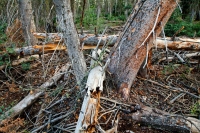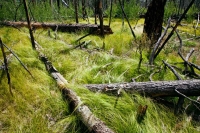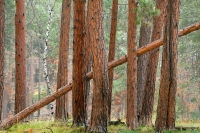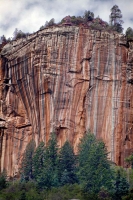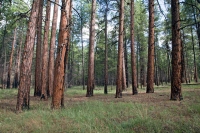Grand Canyon — North Rim
As an Artist in Residence at the Grand Canyon National Park in 2012 I photographed the forests of the North Rim. Fire management in the West is an uncertain and controversial subject. In areas where fires have been suppressed, it seems as though the forest either has burned or is very ready to burn. This photo essay explores the visual and aesthetic aspects of the North Rim forests. A short essay about my experience is below.
NORTH RIM OF THE GRAND CANYON – ARTIST IN RESIDENCE
In 2012 Elizabeth and I were honored to be artists in Residence at the North Rim of the Grand Canyon. I assigned myself the task of photographing the lands of the North Rim. Beautiful as they are, I wanted to avoid the seductive views into the Canyon and photograph the lesser-known landscapes behind the rim. I had never seen much photography of this land, and I naively thought it would be fun to photograph. I was astounded by the unexpected complexity of a chaotic and dynamic forest. It was a forest of a thousand faces, each showing the results of a hundred years of different fire, forest and logging management practices, or lack thereof.
Some parts of the forest had fires suppressed during this time; in other parts fires were allowed to burn; and some were subject to proscribed, both controlled and uncontrolled, burns. The unburned parts are impenetrable, with downed trees and brush covering the forest floor, like a giant game of pickup sticks. It felt like it was ready to burn at any moment, in a climax fire engulfing everything. Burned areas had various characteristics, depending on the severity of the burn, from huge areas of Aspen monocultures, to small patches of delicate grasslands. Each part of the forest has its own unique characteristics and appearance.
It was certainly not the romantic, iconic forest we are used to seeing in calendars and coffee table books. What a daunting challenge it was to photograph. I struggled to make sense of it all, to find some structure and aesthetic in a most chaotic environment. The diversity of scenes expressed the dynamism of the processes going on. While I never felt totally at home there, I slowly began to make sense of what was going on. As I relaxed my expectations I began to understand what I was seeing. I was able to photograph the processes going on with some insight, as well as uncertainty. There is a certain beauty to it all, once one gets properly attuned.
The photography is the result of my explorations along the North Rim. What started out with a simple curiosity turned into an exploration of forest evolution, and these photographs show what the results of various types of forest conditions look like on the ground.

